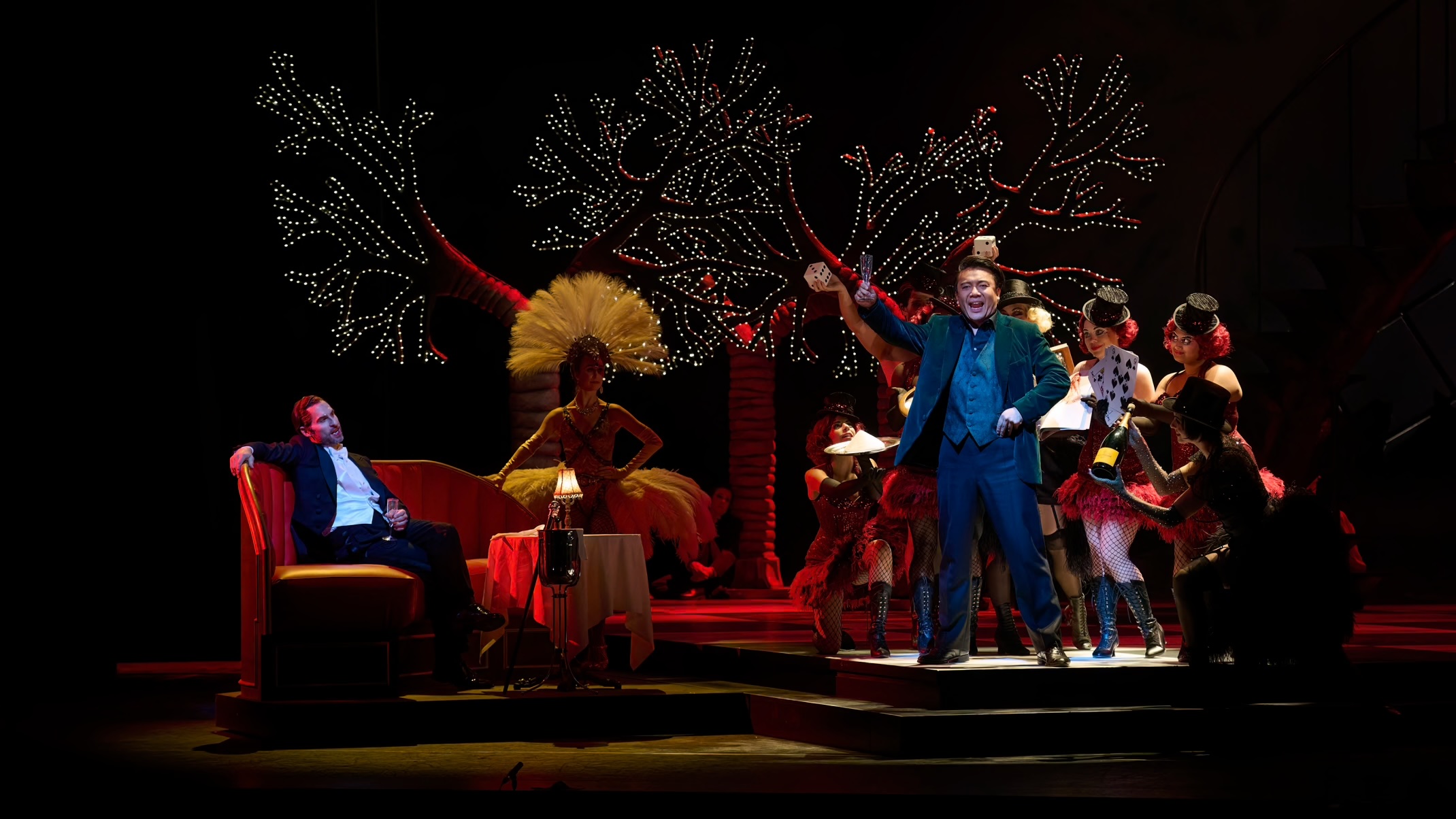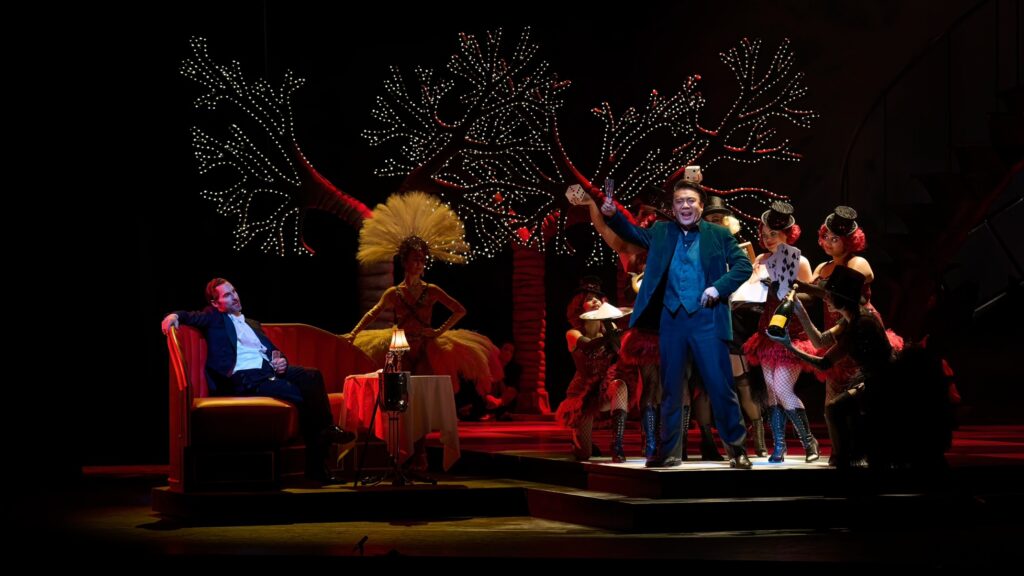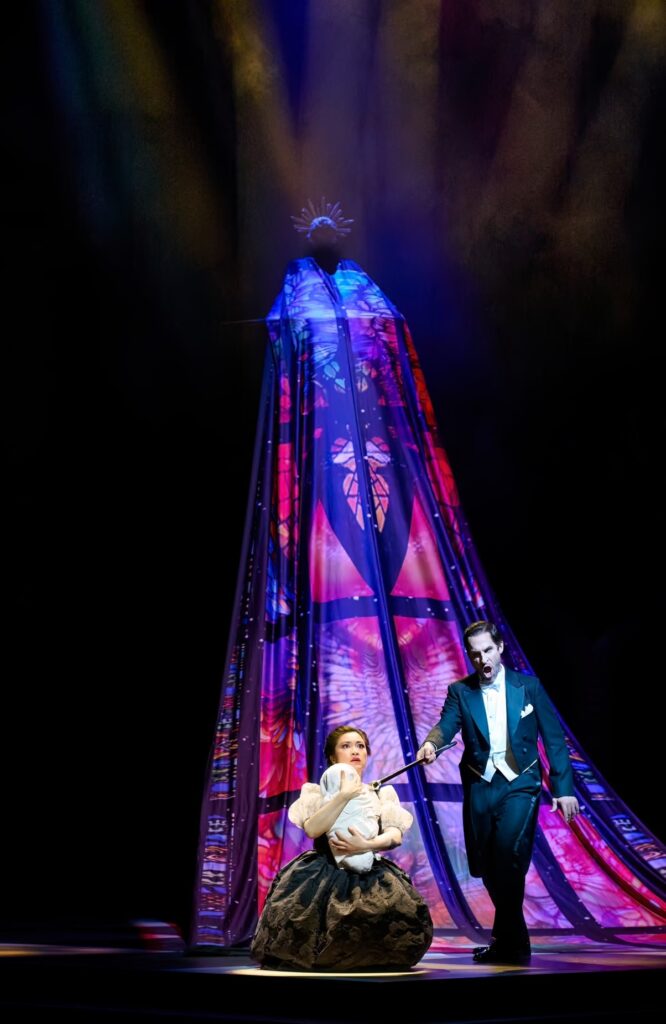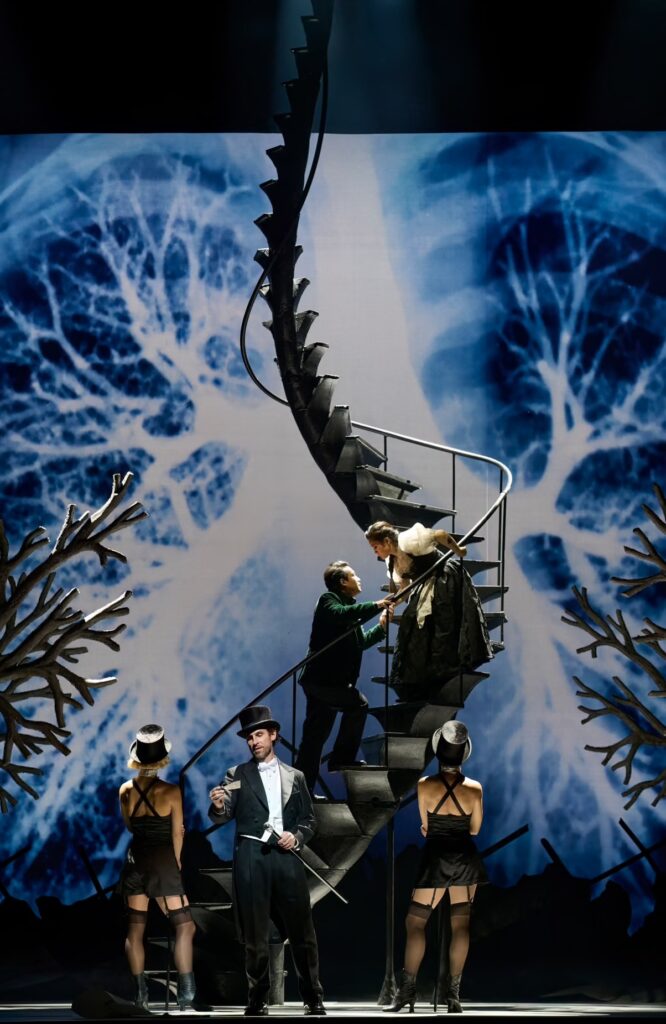

Canadian Opera Company / Faust, composed by Charles Gounod, libretto by Jules Barbier and Michel Carré, conducted by Johannes Debus, directed by Amy Lane, Four Seasons Centre, closes Nov. 2.
Gounod’s wildly popular 1859 opera Faust is a tragedy, but then, so are many works of the genre. I’ve seen Faust on several occasions, and while acknowledging the tragic elements, I was always able to skip above them by relishing in the composer’s gorgeous string of arias, ensembles and choruses.
Not this time, however.
When Maestro Debus and his melancholy players executed those first gloomy, threatening notes of the score, I was ensnared in the bleakness of the libretto, and caught up in the opera’s miasma of sorrow. This time, under Debus’ conducting, that string of exquisite pieces rested squarely in the darkness of the score, and that is where I stayed until the end. It was a depressing evening of opera, and I certainly experienced a different Faust.
Which got me to thinking. Is this what Gounod intended, because the haunting score certainly suggests that. Instead of isolating the arias etc., I took them as part of a whole cloth, and as the tragedy devolved into its inevitable tragic end, even the angels singing of hope couldn’t shake my despondency.
Anyone who follows my reviews knows that I think that conductor Debus can do no wrong, and this production of Faust convinces me even more of the great skills that this maestro possesses. That he and his players were able to absolutely transform an opera score for me, speaks to the greatness of Debus and his orchestra.
And then there is the rather bizarre staging which acted independently of the woeful score.
The director, Amy Lane, and her design team, Emma Ryott, set and costumes, and Charlie Morgan Jones, lighting, are English and Welsh, and do most of their work in Europe. Thus, we are dealing with a European mind set, which in this new COC production, (a co-pro with Malmo Opera), does border on Eurotrash, but in a fascinating way.
The backdrop is a giant chest x-ray where the blood vessels of the lungs are large enough to resemble the branches of the stunted trees which line the stage. The rationale for this image, according to Lane’s program notes, is a reminder that it is Faust’s failing body that leads him to make his pact with the devil. Adding to this is a curved spiral (or should we say spinal) staircase centre stage that resembles scoliosis disease, and a lot of watching and climbing happens there. In fact, so dominant is the back projection, that I found myself fixating on those damned lungs, every pink and magenta and blue part of them. An interesting choice, but a questionable and jarring one.

Now Faust being a French opera, it has a ballet and a famous one at that. In the opera, instead of being a celebration of the Christian saint Walpurga and the warding off of evil spirits, Faust’s Walpurgisnacht ballet is an orgy honouring the Devil where Faust gets to mingle with the most beautiful women the world has ever known. Due to length, however, the ballet is usually left out, although some of the singing from the ballet is incorporated into a brief Walpurgisnacht scene, and that is what this production does.
While the ballet is absent, Lane and her English choreographer, Tim Claydon, have managed to incorporate dance throughout. In fact, dance is a dominant directing tool in the opera, and it is the surprising leitmotif.
Mephistopheles is always accompanied by two winsome dancers/minions called Lucie (Sierra Richardson) and Bubbs (Tina Desroches), and Lane has them do a lot of clever tasks which add to the Devil’s mischief. A golden decked ballerina, Brooklyn Marshall, and her swain, Jack Rennie, represent the casket of jewels which Marguerite finds, which is certainly a unique take on this important element. Marshall and Rennie also appear elsewhere in the opera, so one is always aware of the dance element. It’s like having the ballet scattered throughout the opera, rather than in one set piece. (Side note: I don’t recognize these dancers so I wonder if they are imports? Just asking…)
Now if Lucie and Bubbs are tied to the Devil, what is more decadent than setting the opera amid the sin and sex of the Weimar Republic, and that is what Lane has done. The dancers look like they are straight out of the musical Cabaret. Ryott has costumed them in black onesie lingerie, with black stockings, suspenders, and top hat. They are very fetching morsels indeed. Marguerite wears a pretty peasant outfit, befitting her country innocence, while the men’s outfits, soldiers and civilians both, are vintage 1930s Germany (updated from the opera’s original 16th century setting). Needless to say, Mephistopheles is decked out in top hat, tails and a walking stick, using the latter to help with his magic.

In French opera, you find cross-over voices, some from the lighter repertoire (Mozart, Handel, Rossini buffa) and some from the meat and potatoes (Puccini, Verdi, Donizetti serio). In this case American bass-baritone Kyle Ketelsen (Mephistopheles) is from the former, and although he sang and acted very well, he was out-performed by the louder, heavier voices around him. He was lost in ensembles, and his voice just sounded light-weight, which is too bad., because he has appeared in other repertoire with the COC where he was more evenly matched, and his talent could be seen to advantage.
Making his COC debut was German-born tenor Long Long (Faust) who has his feet in both camps, but reaching more to the heavier side of things. He is a passionate singer, pouring his heart out in his performance, while never shirking when going for his money high notes. In a word, impressive.
The most perfect singer of the evening was Chinese lyric soprano Guanqun Yu (Marguerite) whose repertoire lies mostly on the heavier side, but who also sings Mozart and Bizet. What an absolutely gorgeous, expressive voice she has, with perfect, even phrasing and a luscious sweetness of tone. Even when reaching to the highest register, there is never any strain. What a beautiful singer. This is her COC debut and they absolutely have to have her back.
The loudest voice on stage was Polish baritone Szymon Mechlinski (Valentin), in his COC debut, who could really can belto, and who out-sung everyone else in terms of sound output. He’s a force of nature with a ringing, commanding voice that certainly wakes up the ears. Strong and energetic are two good words to describe his performance.
Canadian mezzo-soprano Alex Hetherington (Siebel) keeps growing in her performance skills. She has a lovely voice, full of colour, and can really project dramatic elements. Right now she is early in her career and it will be interesting to watch how her voice develops. It’s currently on the lighter side.
Completing the cast were veteran Canadian mezzo-soprano Megan Latham (Marthe) and newbie baritone Korin Thomas-Smith (Wagner) who acquitted themselves well in their comprimario roles.
While I had trouble grappling with the set per se, the set pieces and costumes worked, and the singing and acting were very strong (with some reservations as noted). Nonetheless, neither the humour (and yes there are some funny lines from Mephistopheles), nor the clever direction of Lucie and Bubbs could alleviate the gloom and doom coming from the orchestra.
You could say this is a Faust with a split personality.

